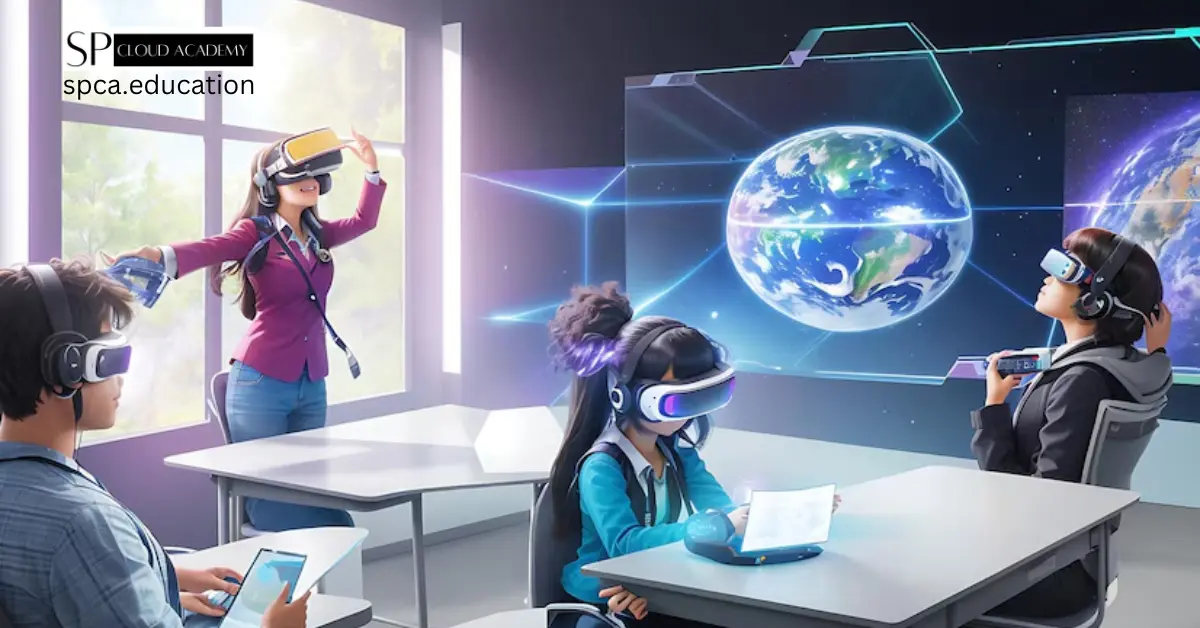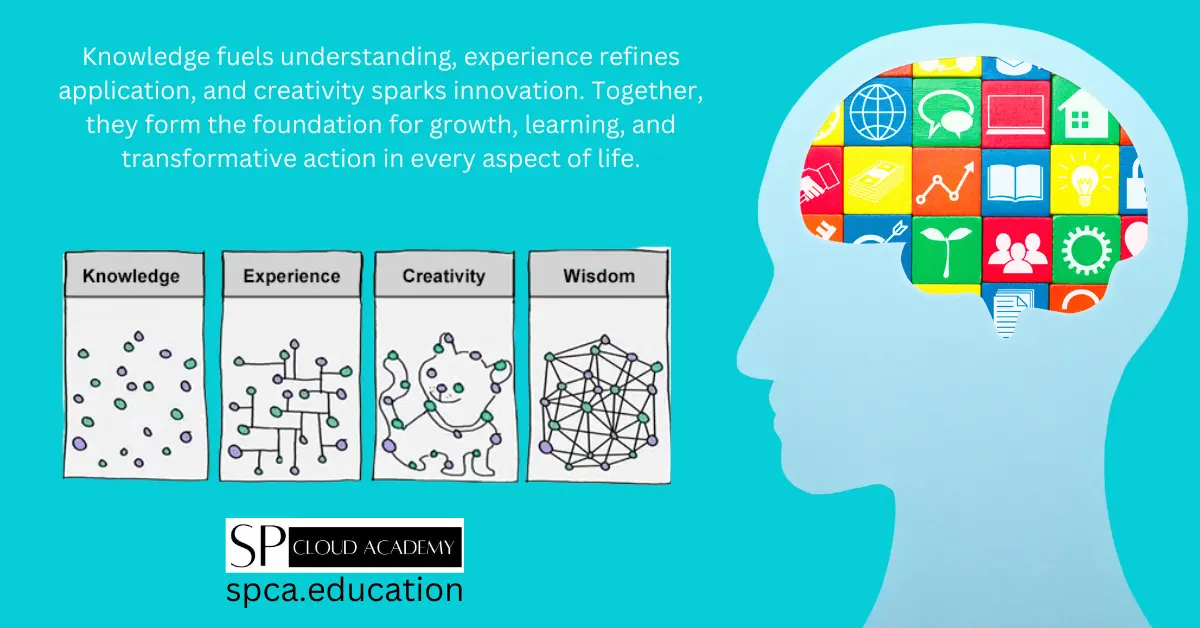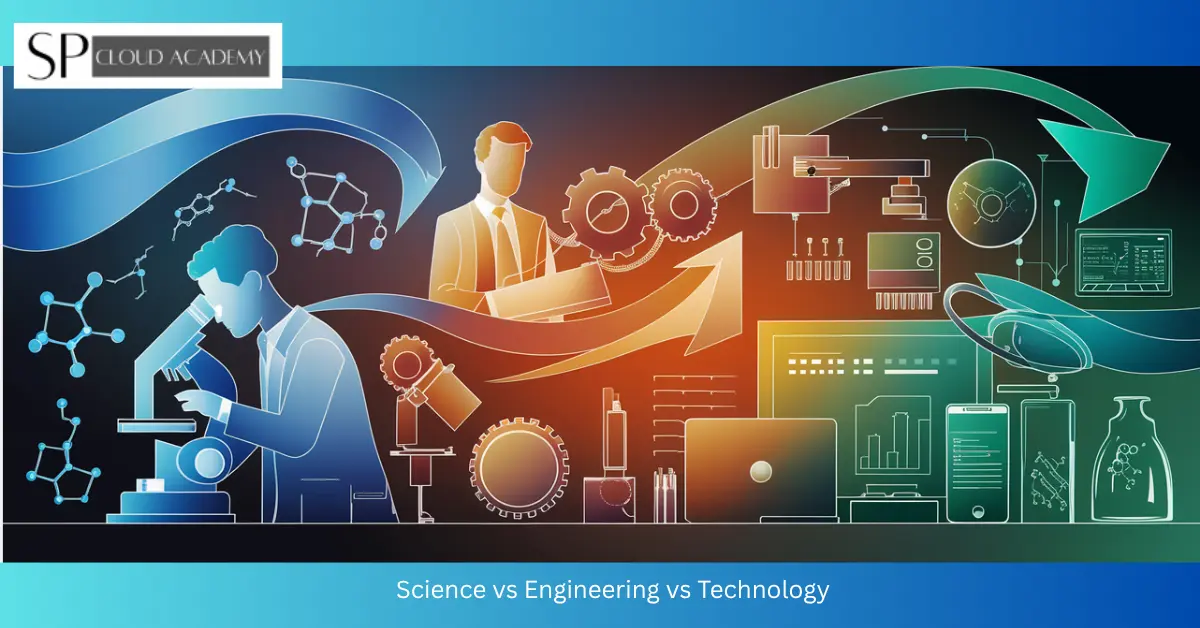Introduction
Have you ever wondered why your smartphone exists? A scientist discovered the principles of electricity and semiconductors, an engineer designed the circuits and components, and technology emerged as the finished product in your hand. While these three terms often get used interchangeably in everyday conversation, they represent distinctly different domains that work together to shape our modern world.
Understanding the boundaries between science, engineering, and technology isn’t just academic hairsplitting. These distinctions matter when choosing a career path, making investment decisions, or simply comprehending how innovation actually happens. Many people assume they’re essentially the same thing with different labels, but that misconception masks the unique role each plays in human progress.
Science asks “why,” engineering asks “how,” and technology asks “what can we do with it?” This fundamental difference in purpose creates three interconnected but separate disciplines. Scientists pursue knowledge and understanding of natural phenomena. Engineers apply that knowledge to solve practical problems and create functional systems. Technology represents the tools, machines, and techniques that result from engineering efforts.
Think of them as three legs of a stool supporting innovation. Remove any one leg, and the whole structure becomes unstable. The scientist provides the foundational understanding, the engineer transforms that understanding into workable solutions, and technology becomes the tangible outcome that changes how we live and work. Each discipline requires different skills, mindsets, and goals, yet they continuously influence and depend on one another in fascinating ways.
What is Science? The Quest for Understanding
Science represents humanity’s systematic pursuit of knowledge about the natural world. At its core, science seeks to answer fundamental questions about how the universe works, why things happen, and what underlying principles govern natural phenomena. Scientists are driven by curiosity and the desire to understand reality at its deepest levels.
The scientific method forms the backbone of this discipline. Scientists observe phenomena, formulate hypotheses, conduct controlled experiments, collect data, and draw conclusions that can be tested and verified by others. This rigorous process ensures that scientific knowledge builds upon itself, creating an ever-expanding foundation of reliable information about our world.
Scientific inquiry spans countless fields, from physics and chemistry to biology and astronomy. A physicist might investigate how particles behave at quantum scales, while a biologist explores the mechanisms of cellular division. What unites these diverse pursuits is the focus on discovery rather than application. Scientists aren’t necessarily concerned with whether their findings have immediate practical uses.
The beauty of science lies in its pursuit of truth for its own sake. When Marie Curie studied radioactivity, she wasn’t thinking about medical treatments or nuclear power plants. She wanted to understand a mysterious natural phenomenon. Many groundbreaking scientific discoveries initially seemed useless but later revolutionized society. Pure research often yields unexpected applications decades after the initial discovery.
Science also embraces uncertainty and revision. Unlike dogma, scientific knowledge remains open to challenge and refinement as new evidence emerges. This self-correcting nature ensures that our understanding of nature continuously improves, even if it means discarding previously accepted theories.
What is Engineering? Turning Knowledge into Solutions
Engineering transforms scientific knowledge into practical solutions for real-world problems. While scientists ask “why does this happen,” engineers ask “how can we make this work for us?” This fundamental shift in focus defines engineering as a discipline of application and design rather than pure discovery.
Engineers use scientific principles, mathematics, and creativity to design, build, and optimize systems, structures, devices, and processes. They work within constraints like budget, materials, time, safety regulations, and user needs. An engineer’s success isn’t measured by discovering something new about nature but by creating something functional, reliable, and efficient.
The engineering process involves identifying problems, brainstorming solutions, creating prototypes, testing designs, and iterating until the solution meets specified requirements. Consider a bridge engineer: they apply physics principles about forces and materials to design a structure that safely carries traffic across a river while staying within budget and timeline constraints.
Different engineering branches tackle different types of challenges. Civil engineers design infrastructure, mechanical engineers create machines and mechanical systems, electrical engineers work with circuits and power systems, and software engineers build computer programs. Despite their different focuses, all engineers share the common goal of creating functional solutions.
Engineering requires balancing competing demands. The best theoretical solution might be too expensive, too complex, or too time-consuming to implement. Engineers must make trade-offs, considering factors like cost-effectiveness, manufacturability, sustainability, and user experience. This practical focus distinguishes engineering from pure science, where such constraints are less relevant.
What is Technology? The Tangible Results
Technology represents the tangible tools, machines, systems, and techniques that emerge from engineering efforts. It’s the physical manifestation of applied scientific knowledge—the actual products and processes we use daily. When most people think of technology, they picture smartphones, computers, or medical devices, but technology encompasses far more.
Technology includes not just physical objects but also methods and processes. The wheel is technology, but so is the assembly line process that builds cars. A microscope is technology, and so are the laboratory techniques scientists use to prepare samples. Technology bridges the gap between knowledge and utility, making scientific understanding accessible and useful to society.
The scope of technology extends beyond modern electronics. Ancient civilizations developed technologies like irrigation systems, metallurgy, and architectural techniques. These innovations solved practical problems using the scientific understanding and engineering capabilities available at the time. Technology has always been humanity’s way of manipulating the environment to better meet our needs.
Technology constantly evolves as engineering improves and scientific understanding deepens. Today’s cutting-edge smartphone will seem primitive within a few years. This rapid evolution occurs because engineers continuously find better ways to implement scientific principles, creating more efficient, powerful, or user-friendly technologies.
Importantly, technology shapes society and culture. It changes how we communicate, work, learn, and entertain ourselves. The printing press transformed information sharing, the automobile revolutionized transportation and urban planning, and the internet fundamentally altered nearly every aspect of modern life. Technology doesn’t exist in isolation—it interacts with human society in complex ways.
The Interconnected Relationship: How They Work Together
Science, engineering, and technology don’t operate in isolation—they form a dynamic, interconnected system where each discipline continuously influences and advances the others. This relationship creates a powerful innovation cycle that drives human progress forward at an accelerating pace.
Science provides the foundational knowledge that makes engineering possible. Without understanding electricity, electromagnetic waves, and quantum mechanics, engineers couldn’t have designed radios, computers, or smartphones. Every engineering breakthrough rests on scientific discoveries that revealed how nature operates. The deeper our scientific understanding, the more sophisticated our engineering capabilities become.
Conversely, engineering and technology enable new scientific discoveries. Advanced technologies create tools that scientists need to explore phenomena beyond human perception. Electron microscopes revealed cellular structures, telescopes showed us distant galaxies, and particle accelerators let physicists observe subatomic interactions. Scientists today depend on sophisticated instruments that only modern engineering could produce.
Technology also raises new questions that drive scientific inquiry. When engineers created the first computers, computer scientists developed new theoretical frameworks to understand computation. Medical technologies like MRI machines prompted research into brain function and physiology. The existence of new technologies often reveals gaps in our scientific understanding, motivating further research.
This feedback loop accelerates innovation. Scientific breakthroughs enable new engineering possibilities, which produce technologies that facilitate further scientific discoveries. Each cycle moves faster than the last because we have more knowledge, better tools, and more sophisticated techniques. The smartphone in your pocket embodies centuries of scientific discoveries, decades of engineering refinement, and continuous technological evolution.
Key Differences in Goals and Approaches
Understanding the distinct goals and methodologies of science, engineering, and technology reveals why these disciplines require different mindsets and skill sets. Their fundamental differences in purpose shape everything from educational programs to career paths to how professionals in each field measure success.
Scientists pursue knowledge and understanding. Their primary goal is discovering truths about nature and expanding humanity’s collective knowledge. Success means publishing research that advances understanding, even if the discoveries lack immediate applications. Scientists value accuracy, reproducibility, and theoretical elegance. They’re trained to question assumptions, design rigorous experiments, and communicate findings through peer-reviewed publications.
Engineers pursue solutions and functionality. Their goal is creating systems and devices that solve specific problems within practical constraints. Success means delivering a product that works reliably, efficiently, and economically. Engineers value practicality, optimization, and feasibility. They’re trained to balance competing requirements, work within limitations, and communicate through technical specifications and prototypes.
Technology pursues capability and utility. Its goal is providing tools and methods that people can actually use to accomplish tasks. Success means adoption and effectiveness in real-world applications. Technology values usability, accessibility, and impact. The best technology integrates seamlessly into people’s lives, making previously difficult tasks easier or enabling entirely new possibilities.
The approaches also differ significantly. Scientists employ the scientific method, emphasizing controlled experimentation and hypothesis testing. Engineers use design processes, emphasizing iteration and problem-solving. Technology develops through implementation and user feedback, emphasizing practical deployment and refinement.
These different orientations mean that someone excelling in science might struggle in engineering, and vice versa. Each discipline rewards different talents and temperaments, though all three require analytical thinking and creativity.
Quick Comparison Table
| Aspect | Science | Engineering | Technology |
|---|---|---|---|
| Primary Goal | Understanding nature | Solving practical problems | Providing useful tools |
| Key Question | “Why does this happen?” | “How can we make this work?” | “What can we do with this?” |
| Focus | Discovery and knowledge | Design and application | Implementation and utility |
| Output | Theories, laws, research papers | Systems, designs, prototypes | Products, devices, processes |
| Success Metric | Accuracy and reproducibility | Functionality and efficiency | Usability and adoption |
| Methodology | Scientific method, experimentation | Design process, iteration | Deployment and refinement |
| Example Professional | Research physicist | Mechanical engineer | Software developer |
| Time Horizon | Long-term, open-ended | Project-based, defined timeline | Continuous improvement |
| Constraints | Natural laws | Budget, materials, regulations | User needs, market demands |
| Risk Tolerance | High (many failed experiments) | Moderate (calculated risks) | Low (must work reliably) |
Real-World Examples That Illustrate the Distinctions
Examining concrete examples helps clarify how science, engineering, and technology differ in practice. Let’s explore several scenarios that demonstrate these disciplines working independently and together.
Consider electricity: Scientists like Michael Faraday and James Clerk Maxwell studied electromagnetic phenomena, discovering the laws governing electric and magnetic fields. Their work was pure science—understanding nature’s behavior. Engineers like Thomas Edison and Nikola Tesla then applied these principles to design generators, motors, and power distribution systems. Finally, technology emerged as the electrical grid, household appliances, and electronic devices we use today.
Medical imaging provides another clear example. Scientists discovered that certain atomic nuclei respond to magnetic fields and emit radio waves—a physics finding with no obvious application. Engineers recognized this phenomenon could create images of internal body structures and designed MRI machines incorporating powerful magnets and sophisticated signal processing. The resulting technology revolutionized medical diagnostics, allowing doctors to detect tumors, torn ligaments, and brain abnormalities non-invasively.
Smartphones showcase all three working together. Scientists developed quantum mechanics, semiconductor physics, and information theory. Engineers designed integrated circuits, touchscreen interfaces, wireless communication systems, and battery technologies. The resulting technology—your smartphone—combines all these elements into a device that connects billions of people worldwide.
Even simpler examples illustrate these distinctions. Scientists study aerodynamics and materials science. Engineers design aircraft that safely carry passengers. Technology is the commercial airliner that flies you across continents. Each step requires different expertise, goals, and methodologies, yet all three contribute essential elements to the final outcome.
Why Understanding These Differences Matters
Recognizing the distinctions between science, engineering, and technology has practical implications for students, professionals, policymakers, and anyone interested in innovation. These differences affect career choices, educational paths, funding decisions, and how society approaches technological challenges.
For students considering STEM careers, understanding these differences helps clarify which path aligns with their interests and strengths. Someone who loves asking fundamental questions and conducting experiments might thrive as a research scientist. Someone who enjoys solving practical problems and building things might find fulfillment in engineering. Recognizing these differences early prevents costly mistakes in educational and career planning.
Policymakers and funding agencies need to appreciate how these disciplines differ when allocating resources. Basic scientific research often seems impractical because applications aren’t immediately obvious, yet history shows that fundamental discoveries eventually enable revolutionary technologies. Funding only applied research starves the foundation that future innovations require. Understanding the long-term relationship between science, engineering, and technology supports balanced investment.
Businesses benefit from recognizing these distinctions when building teams and managing innovation. Companies need scientists for research and discovery, engineers for product development, and technologists for implementation and deployment. Each role requires different skills and mindsets. Effective innovation requires coordinating these different perspectives rather than expecting one person to excel at all three.
For society broadly, understanding these differences promotes realistic expectations about technological progress. Science can’t be rushed—fundamental discoveries happen through persistent inquiry, not deadlines. Engineering requires time for testing and refinement. Technology adoption depends on factors beyond pure capability. Appreciating these realities helps society make better decisions about research priorities, development timelines, and technology deployment.
Conclusion
Science, engineering, and technology represent three distinct yet deeply interconnected disciplines that collectively drive human progress. Science pursues understanding through discovery, asking fundamental questions about how nature works. Engineering applies that understanding to create solutions, designing systems and devices that solve practical problems. Technology emerges as the tangible tools and methods that result from engineering efforts, shaping how we live and interact with the world.
These differences aren’t merely semantic—they reflect fundamentally different goals, methodologies, and measures of success. Scientists seek knowledge for its own sake, engineers seek functional solutions within constraints, and technology seeks useful capability and broad adoption. Each discipline requires distinct skills and mindsets, yet none can reach its full potential without the others.
The relationship between these three forms a powerful innovation cycle. Scientific discoveries enable new engineering possibilities, which produce technologies that facilitate further scientific inquiry. This feedback loop has accelerated dramatically in recent centuries, transforming human civilization at an unprecedented pace. Understanding how this cycle works helps us appreciate both the individual contributions of each discipline and their collective impact.
Whether you’re a student planning your education, a professional building your career, or simply someone curious about how innovation happens, recognizing these distinctions provides valuable perspective. The next time you use your smartphone, receive medical treatment, or benefit from any modern technology, you can appreciate the scientific discoveries that made it possible, the engineering ingenuity that transformed principles into practice, and the technological refinement that made it accessible and useful. Together, science, engineering, and technology continue advancing humanity’s capabilities and expanding what’s possible.
See Also
-

Webinar Rules and Ethics: The Ultimate Guide for Professionals
-

Why Virtual Learning Environments Are the Key to Modern Education Success
-

Innovative ICT Centers: The Future of R&D in Engineering Education
-

Transforming Engineering Education: Why AI Literacy is a Must for Educators
-

The Future of Project Management: Integrating Cloud Computing and AI
-

Unlock Educational Access to Autodesk Products
-

The Education 4.0 Framework
-

Unlocking Limitless Potential: How to Master the Art of Thinking Outside the Box
-

Unleashing the Power of Knowledge, Experience, and Creativity: A Winning Trio for Success
